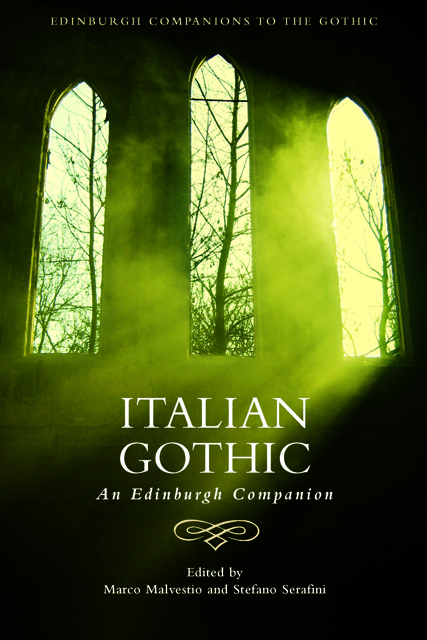9 - Gothic Cinema
Published online by Cambridge University Press: 20 October 2023
Summary
The most prolific period in Italian horror filmmaking is commonly classified into two main cycles or filoni: the Gothic of the 1960s and the giallo of the 1970s. While the former describes a key trend in domestic horror that is marked by a distinctive approach to the stereotypical Gothic themes and motifs, the latter refers to a nationally specific hybrid form that is defined by a strict coexistence of crime fiction and graphic gore. That said, this chapter seeks to add nuance to this acknowledged distinction by further exploring the Gothic influence on the giallo as well as the close intertwining of the two cycles in relation to their narratives and style. Internationally, this strict interrelationship has also served to differentiate the Gothic and giallo film production from its Anglo-American models and make it one of global popular culture's most iconic trademarks.
The purpose of this investigation is twofold. On the one hand, this chapter provides a critical understanding of both the Gothic and the giallo in a domestic context by outlining their historical phases, the dynamics of their production system as well as their major thematic affinities and shared practices. On the other hand, this chapter focuses on the narrative tropes and stylistic practices that distinguish three of its most representative figures, namely Riccardo Freda, Mario Bava and Dario Argento, from their foreign inspirations. It explores how and to what extent these directors have served to shape the two cycles and earn them cult status.
The Dawn of the Italian Gothic Horror
To me, there is something strangely offensive about the idea of screen violence ‘justified by the plot’.
— Stephen Thrower, Beyond Terror: The Films of Lucio FulciThe traditionally popular genre of horror ‘was as much a foreign narrative form in the history of Italian cinema as was the western’ (Bondanella 306). Unlike other Italian popular genres of the 1960s, such as the commedia all’italiana and the peplum, Italian horror film did not develop from an earlier cycle during the era of Italian silent cinema (1905–30). Throughout this period the domestic production companies were uninterested in the genre, the costume drama and the historical epic being the industry's most popular and profitable investment (Bondanella 5).
- Type
- Chapter
- Information
- Italian GothicAn Edinburgh Companion, pp. 138 - 153Publisher: Edinburgh University PressPrint publication year: 2023



